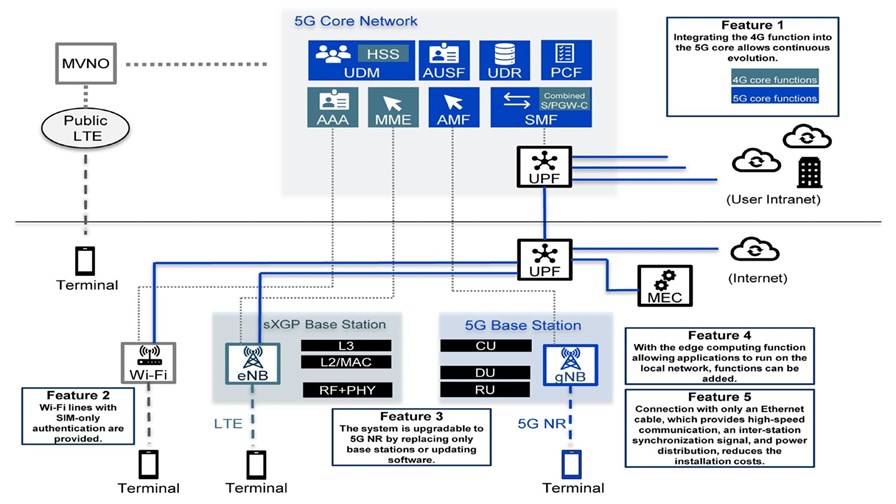
Source: Panasonic
- Japanese firm, Panasonic, thinks it’s spotted a gap in the mobile/network services market
- There’s no new whizz-bang technology waiting in the wings to enable what it has in mind
- Instead it’s glued together already available but up-to the minute technologies to come up with something that will work out of the box in a familiar way
It’s a virtual private voice network - principally for office building tenants. In other words for companies that tend not to actually own all their buildings and are therefore keen for there to be low initial investment with the ability to pack up the technology and move it elsewhere when required.
These corporate tenants will probably use offices in large cities, satellite offices, and shared offices, and will want to connect ‘securely’ to their corporate intranets without being dogged by complex set-up and support requirements, such as VPN connection settings. And of course the network has to be relatively cost-effective and reasonably flexible ‘going forward’, so will be open enough to accommodate the latest mobile applications and new high performance connections.
It all makes sense but Panasonic is not sure that the concept is going to be welcomed with open arms. It’s also fairly sure that it will need to be modified in detail. So it is doing a trial installation designed to wrap up at the end of the year, at which point it will decide whether to press ahead with a commercial launch once it’s determined what changes will be needed.
So what is it exactly?
It’s essentially a private LTE voice and data network running over Wi-Fi (unlicensed frequency band). So it doesn’t require much in the way of permission-seeking and certainly doesn’t need expensive dedicated spectrum. In its initial guise for the trial it uses a cordless telephone standard (sXGP) using the 1.9 GHz frequency band and is compatible with TD-LTE, the time division duplex system for 4G.
Panaxonic says the experimental network it’s building will inherit the features of the ‘Personal Handy-phone System’ (PHS), well known in Japan (and in some countries in Europe) so will get initial customer acceptance. That system is also autonomous and can be kept going through disasters and external outages. In fact it could potentially fill a niche formerly occupied by the old PBX - providing an autonomous local network (without tariffs) with a gateway to the carrier network to make external calls.
Panasonic envisages it being used as a multifunctional network to support smartphones and PCs along with IoT devices, all securely connected integrating the characteristics of the conventional private telephone network and the private IP network. The sXGP base stations are operated with a 5G core which means it can receive continuous infrastructure investment for future deployment of 5G-specific applications.
It says 4G sXGP system has a fully inter-node synchronous 5G architecture, which consists of distributed units (DUs), a central unit (CU), network switches, and a core network, a completely separated (sliced) network can be configured for each SIM card’s attributes, maintaining the security and integrity of the connection to the intranets of several companies if required. It points out that its edge computing function will allow the computing resources in the base station to be used for IoT applications such as building management, all without requiring large-scale servers and cloud lines, thus enabling the business to continue even if the private network is isolated from the external network due to disaster or outage.
Email Newsletters
Sign up to receive TelecomTV's top news and videos, plus exclusive subscriber-only content direct to your inbox.




